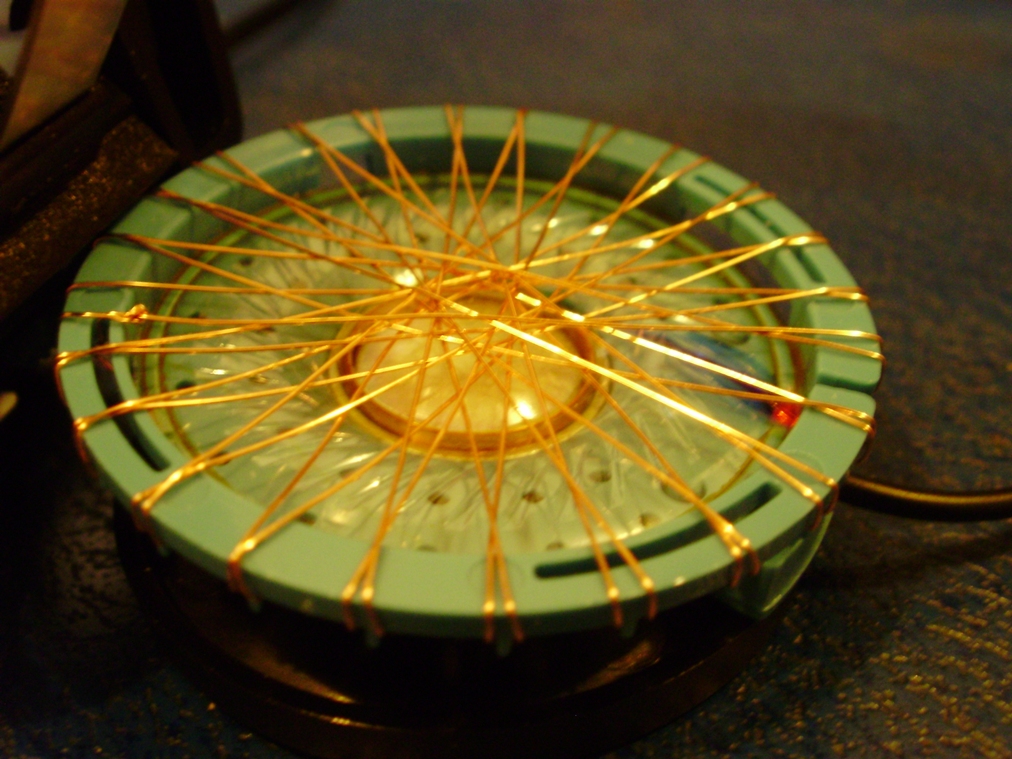Hello. I was doing some sine sweep tests with the speakers and apparently it angered one of the cats... Resulting in a torn cone. It still works, but I am now using the one that was damaged in shipping. I guess the ripped one is now my testing speaker...
What I always wanted to do was get some good wire and make a slave's-wages protection grille. Too late for one speaker unfortunately.
The attached images show what I'm thinking of. I was wondering what the sonic caveats might be to this approach. Will the directional pattern change a lot? Will this kind of grille make differences that can be used to improve the sound quality? Am I insane?

What I always wanted to do was get some good wire and make a slave's-wages protection grille. Too late for one speaker unfortunately.
The attached images show what I'm thinking of. I was wondering what the sonic caveats might be to this approach. Will the directional pattern change a lot? Will this kind of grille make differences that can be used to improve the sound quality? Am I insane?

Kean,
I haven't played with grills much (well, at all, really, aside from my very first speakers). I suspect that that much wire would affect the sound quite a bit more than a fairly transparent grill cloth. I have used one big, curved wire, and didn't hear much of a difference. Obviously, the potential effects are up in the treble. I'd wonder about keeping it pretty open in the center, but maybe a little denser towards the edge of the cone. Maybe you could build some sort of hybrid, with traditional grill cloth in the center? Without testing, though, its hard to know. For all I know, you'd find the effects to be positive!
Paul
Wild Burro Audio Labs - DIY Full Range Speakers
I haven't played with grills much (well, at all, really, aside from my very first speakers). I suspect that that much wire would affect the sound quite a bit more than a fairly transparent grill cloth. I have used one big, curved wire, and didn't hear much of a difference. Obviously, the potential effects are up in the treble. I'd wonder about keeping it pretty open in the center, but maybe a little denser towards the edge of the cone. Maybe you could build some sort of hybrid, with traditional grill cloth in the center? Without testing, though, its hard to know. For all I know, you'd find the effects to be positive!
Paul
Wild Burro Audio Labs - DIY Full Range Speakers
The advantage of heavy-gauge wire is that it holds its shape. So, you can make and arc that sticks out in front of the speaker, thus providing more protection (keeping stuff farther away). When I did it, I used what we called "#9 wire" from our on-farm fence building supplies. It was really heavy galvanized steel, and looked pretty neat. FWIW, I used the B&W Silver Signature as inspiration.
If you are wrapping from screw to screw (and thus, right across the center), it would be easy to play with "phase plugs".
Paul
Wild Burro Audio Labs - DIY Full Range Speakers
If you are wrapping from screw to screw (and thus, right across the center), it would be easy to play with "phase plugs".
Paul
Wild Burro Audio Labs - DIY Full Range Speakers
- Status
- This old topic is closed. If you want to reopen this topic, contact a moderator using the "Report Post" button.